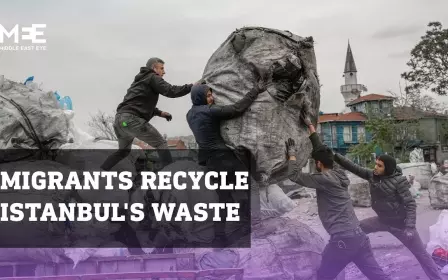Tunisia: Scores missing and one dead after boat capsizes in Mediterranean

Scores of people are missing in the Mediterranean after a boat crowded with people headed for Europe from Libya sank off neighbouring Tunisia.
The International Organisation for Migration (IOM) announced that 75 people went missing on Wednesday in the Mediterranean. One person was found died, while coastguards rescued 24 others after the boat transporting them sank near the southern Tunisian city of Sfax.
IOM said the boat was carrying almost 100 people when it set sail. The Tunisian coastguard and navy units said they managed to rescue 30 people out of the water.
"According to preliminary results of the investigation, an inflatable boat left the coast of Zawara in Libya on Sunday night with around 100 people on board," Tunisia's National Guard spokesman Houcem Eddine Jebabli said.
"They were of various African and Asian nationalities."
Libya has become a significant departure point for people seeking to reach Europe on the world's deadliest migration route.
Improving weather in recent weeks has prompted a spike in departures.
According to IOM, since the start of the year, 6,340 people have been intercepted and returned to Libya.
Many people have managed to reach Italy, some 300km away.
However, many others die at sea when their often unseaworthy boats capsize or break down. Since January, at least 129 people have died attempting the crossing, and 459 have gone missing.
Last year, 15,671 people attempted to reach Italy from Tunisia, up from fewer than 13,000 in 2020, according to the Tunisian Forum for Economic and Social Rights (FTDES).
Nearly 2,000 people went missing or drowned in the Mediterranean in 2021, compared to 1,401 the previous year, according to the IOM.
Tunisia's Sfax and Libya's Zawara regions are busy departure points for attempts to reach Europe, some of them by Tunisian and Libyan citizens.
Middle East Eye propose une couverture et une analyse indépendantes et incomparables du Moyen-Orient, de l’Afrique du Nord et d’autres régions du monde. Pour en savoir plus sur la reprise de ce contenu et les frais qui s’appliquent, veuillez remplir ce formulaire [en anglais]. Pour en savoir plus sur MEE, cliquez ici [en anglais].





